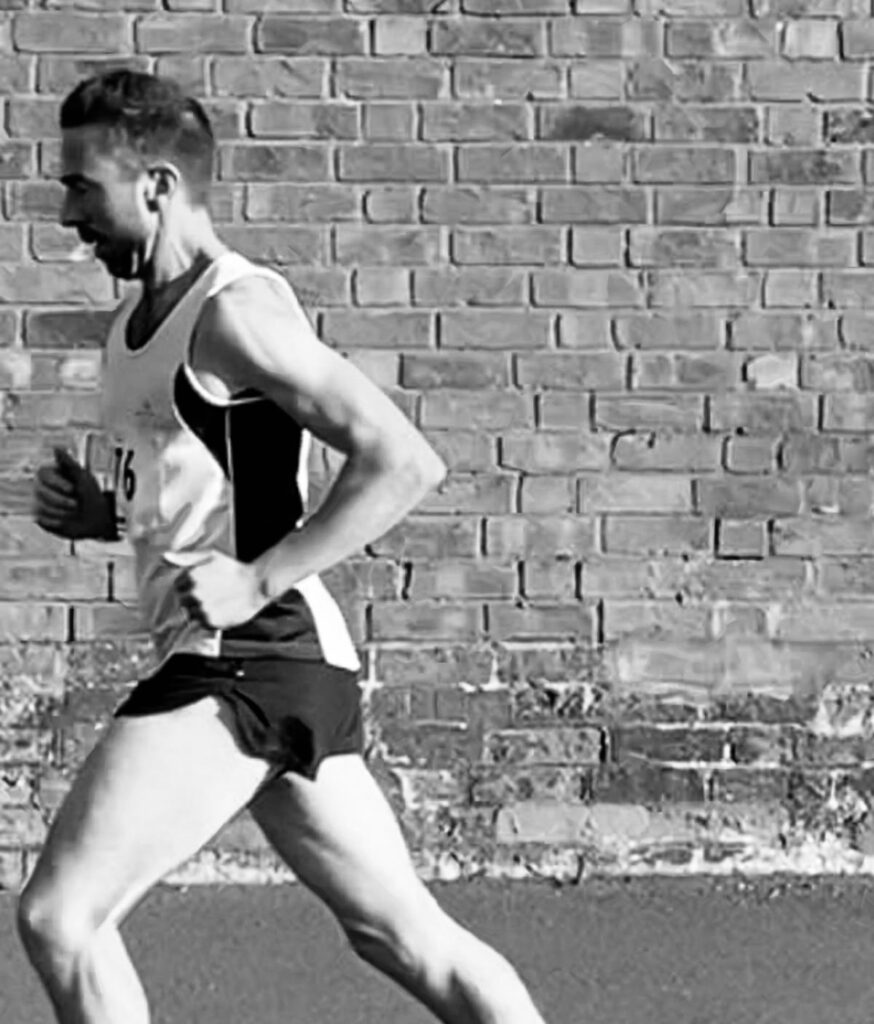
Why Pre-Workout Static Stretching Is Making You Slower And Weaker
By Neil O’Hanlon
Hey folks. If you’re anything like me then you’ll remember being told to ‘Always stretch before a run’. I remember the advice through primary school and into secondary school, and I was still performing the static muscle stretching regime before my intense Wrekin Hill sprints, well into my early thirties. This was possibly the worst thing I could have done, and I truly believe this was a contributing factor in the ongoing hamstring and glute issues I’ve been having for years. Not only can static stretching open you up to injury, static stretching will also decrease your performance and strength, basically making you slower and weaker. Not good!

This type of stretching makes the muscles more prone to injury, due to the prolonged elongation of the muscle fibers. If you think of a tight elastic band and you stretch it until it becomes twice the length and all floppy and limp, its pretty much good for nothing, and thats exactly what happens to your muscle. It involves holding a muscle in a lengthened position (no smut here please) for a set period. and then applying major force on them during your exercise regime. The fibres have been stretched so much that they have no elasticity left, so when you try to fire the legs, the response from the legs is a little underwhelming to say the least. Again, I use the analogy of a limp elastic band and trying to fire a pebble from it, it’s not gonna happen, it’s lost it power, it’s an anticlimax.

So when I see runners bending toward their toes and leaning against lamp posts and pushing with all their might. It’s sabotaging your performance before you’ve even started. It’s an injury waiting to happen. Put it this way, you wouldn’t let the tyres down on a car if you intended on driving it fast around a track, it would be slow and all over the place. The general consensus seems to be that dynamic stretching is most helpful pre-run, and static stretching is most helpful post-run.
The evidence is clear. Static stretching does not reduce the risk of injury and can actually worsen performance and increase injury risk.
It’s Got To Be A Loose Fit

The thing is, If you want to loosen your joints and increase flexibility before your run, then incorporate dynamic stretches into your warm up. Dynamic stretches involve actively stretching muscles through the full range of motion. Dynamic stretches such as leg swings and side lunges help raise body temperature and increase blood flow to the muscles. This will prepare you for running and reduce the risk of injury.
Dynamic stretching involves performing sport specific movements that prep the muscles we’re going to be using during the workout in a way that mimics what we’re going to be doing. Unlike static stretching, dynamic movements aren’t tedious, 30-second stretches working one muscle at a time.
Here’s Why Dynamic Stretches Are Better Before Exercise
Static stretching doesn’t reduce risk of injury. Not only that, but other research has found that static stretching actually reduces running efficiency which is not what we want. A study found that trained distance runners were roughly 5% less efficient and covered 3% less ground when they performed static stretches before their runs. We definitely don’t want to reduce our running efficiency, but we also don’t want to launch into our run cold, so what can we do.
Cold Car Analogy

In the same way that you warm up your car during winter to dissolve any frost lingering on engine parts, you should also warm up your body and increase blood flow to areas that are going to be “carrying” you through out your run.
This is where dynamic stretching shines because it not only increases blood flow, but also range of motion throughout the lower body. Specifically, many dynamic stretches work to increase range of movement through the hip flexors, an area that is typically stiff in most people. I am someone who has constantly been struggling with ‘High Hamstring Tendonopathy’, so having this hip and hamstring flexibility is a huge factor in preventing my running injuries.
But that’s not all. It can also increase your performance.
Studies have also found that participants who did dynamic stretches before leg extension exercises like running, showed significant increases in performance when compared to static stretching, or no stretching at all. It’s quite obvious to see, a pattern of increased performance emerges after dynamic stretching, while static stretching shows negative effects before a workout.
Main Benefits Of Dynamic Stretching

EXCELLENT WARM UP
Because you exert quite a bit of physical energy and activity, your blood flow will increase. This will in turn increase your body temperature. This way, your body is ready to perform at a high intensity level.
INCREASING MOBILITY
Your muscles will loosen up over time if you stretch to your limits. This leads to an increased range of motion in the joints, tendons and muscles. This means that your dynamic flexibility will increase as a result.
MORE EXPLOSIVENESS
Your joints and muscles will become looser. This means your muscles can contract more easily to their full range of motion. Examples of sports where such explosive power is important is sprinting, football or weightlifting.
SPORT SPECIFIC WARM UP
Performing dynamic stretching exercises in the form of a dynamic warm up are a great way to warm up your body for the sport that is about to follow. This is due to the fact that sports are basically a sequence of continuous dynamic motions.
IMPROVING MOTOR SKILLS AND NERVOUS SYSTEM
Dynamic stretching exercises are often sport specific. A dynamic warm up often tries to mimic the movements which the sport requires as closely as possible. This way, we can drill the motions and movements that are needed before we perform our particular sport. We can use our sport specific dynamic stretching exercises as a way to practice our motor skills before the race has even started etc.
Disadvantages Of Dynamic Stretching

NOT THE SAFEST FORM OF STRETCHING
Injury risk might increase since the movements are performed dynamically and at a moderate to high pace. This leaves less room for error when compared to static stretching. You can also take the stretch to far which can in turn lead to injuries.
LESS EFFECTIVE IN INCREASING RANGE OF MOTION
Static Stretching is more effective in increasing the range of motion of our muscles. If static flexibility and resilience is your goal, then static stretching would in this case be a strong and relevant substitute. Note that dynamic stretching can still play an important role as a warm up though.
Dynamic Stretching Routine for Runners
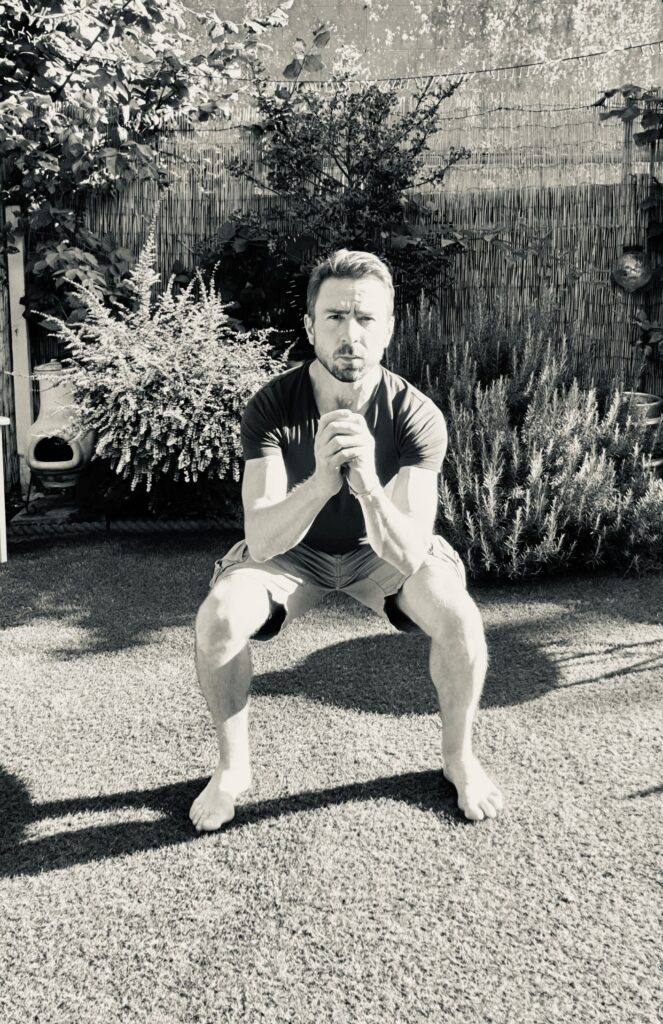
Below we’ll look at several dynamic stretches for runners that warm up the body and perhaps even increase running efficiency, speed and strength.
Squat Stretch
Known as a bodyweight squat or an air squat, the most basic type of squat uses just your body weight for resistance.

- Start with your feet slightly wider than hip-width apart.
- Keep your chest up, engage your abdominals, and shift your weight onto your heels as you push your hips back into a sitting position.
- Lower your hips until your thighs are parallel or almost parallel to the floor.
- You should feel the squat in your thighs and glutes.
- Pause with your knees over, but not beyond, your toes.
- Exhale and push back up to the starting position.
Leg Swings
Leg swings are perfect for prepping the lower body for any kind of movement, as they both engage and dynamically stretch nearly every leg muscle.
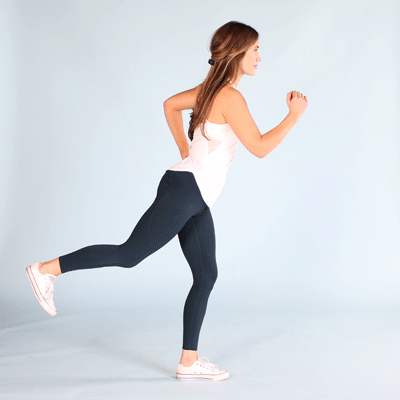
- Begin standing with one hand on a wall.
- Lift your opposite leg and swing it in front of you, then behind you, like a pendulum. Keep core solidly engaged.
- Swing for 10 to 12 reps, then switch to the other side.
Tip: You can also perform an alternative leg swing facing the wall. Simply swing your leg at an angle across your body, then laterally out behind you which I will show below.
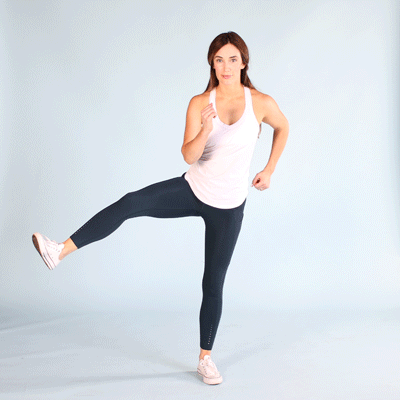
Front Lunge
Front lunges are great for warming up and stretching the hip flexors, hamstrings, glutes, calves, and quads.

- Begin standing tall with your feet together.
- Step one foot in front of you and lower into a lunge, begin sure to keep your knee behind your toes at all times.
- Push back through your heel and glutes to a standing position.
- Repeat, alternating legs, for 10-12 reps on each leg.
The Leg Flexor Stretch
The leg flexor stretch warms the quads and hip flexors while also engaging the muscles around the shin and calves.

- Begin lying on your back.
- Bend one knee at a 90-degree angle in front of you, raising it toward your chest.
- Engage your quads and extend your leg straight out, flexing your foot.
- Repeat on the opposite leg for a total of 10-12 reps on each leg.
Lateral Lunges Stretch
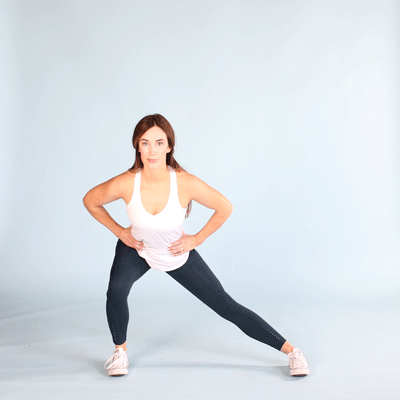
- Begin standing with your feet slightly wider than hip-width apart, feet turned out at a 45-degree angle.
- Lunge to the right over your right leg.
- Return to starting position, pressing up through your heel and engaging your glutes.
- Repeat on the other side and continue alternating legs for 10-12 reps on each leg.
The Bridge Stretch
The bridge will get your glutes and hamstrings firing, while also engaging your core and warming up your lower back

- Begin lying face-up on the floor, knees bent at a 90-degree angle.
- Keeping your heels on the floor, raise your hips until they are in a straight line with your shoulders and knees.
- Hold hips parallel to the ground for a two-second count, then lower.
- Repeat for 10-12 reps.
Knee Hugs Stretches
Knee hugs stretch and activate the hamstrings, while pairing them with walking lunges stretches the hip flexors and gets our blood pumping.
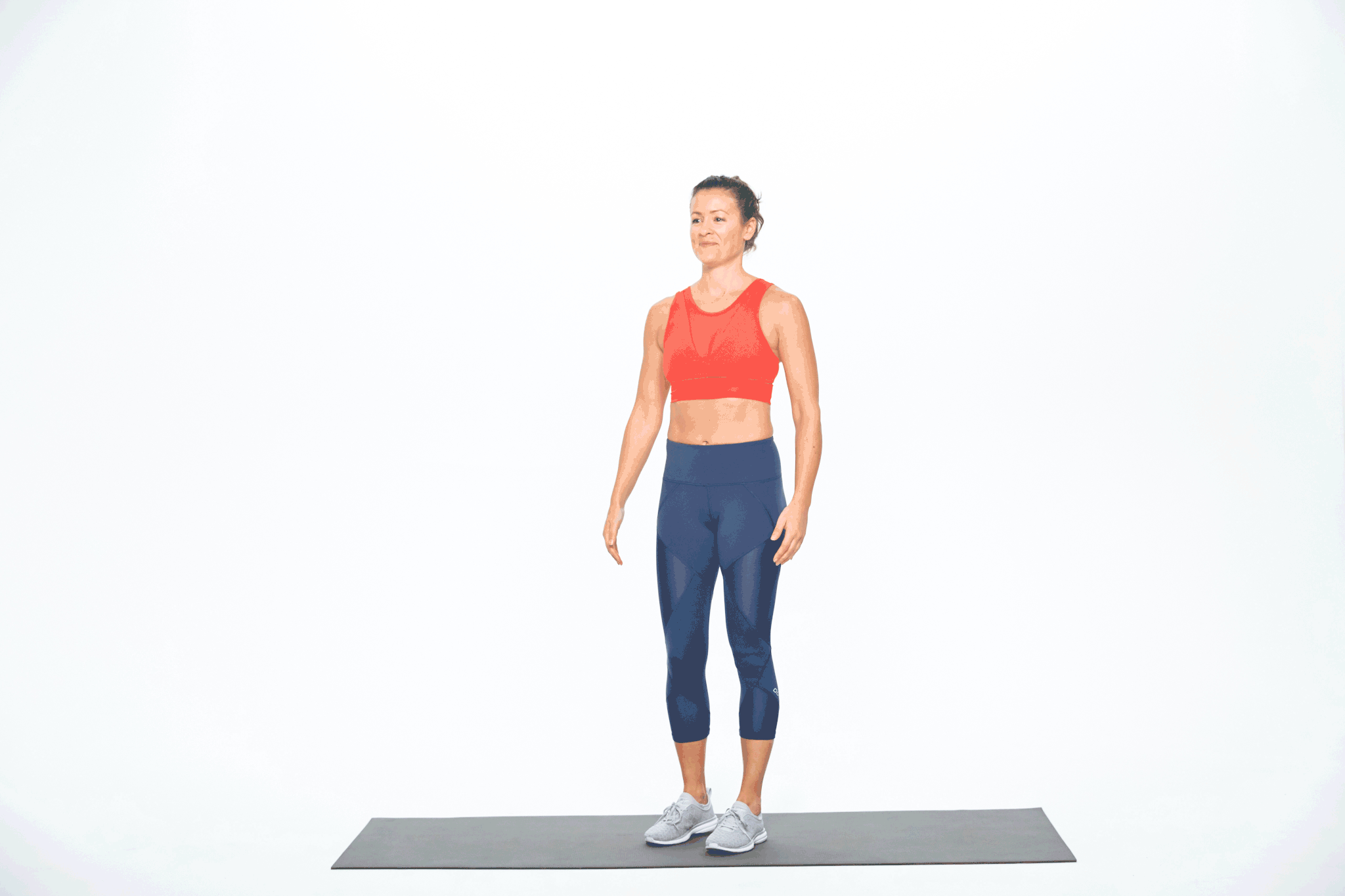
- Begin standing tall. Raise you right knee in toward your chest.
- Grasp your knee and gently pull it further toward your chest. You should feel a deep stretch in your hamstrings.
- Release your knee and lunge forward on the same leg.
- Bring your left leg forward and hug your knee in the same manner.
- Release your left knee and lower into a lunge.
- Repeat for 10-12 reps.
The Forward March Stretch
The forward march loosens the hamstrings while engaging the glutes and quads for a full lower-body dynamic warm up.
Don’t go quite as fast as Manic Martha below though. Too much coffee I’d say. Wowsers!
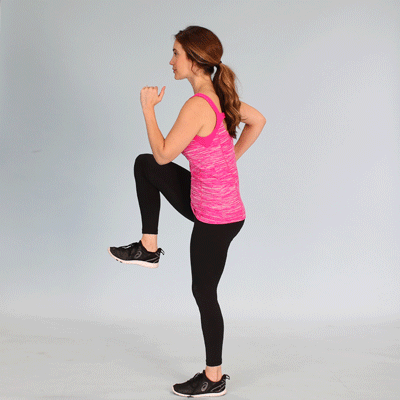
- Begin standing tall with your shoulders back. Begin to march forward, bringing one knee in toward your chest at a time.
- Repeat, alternating knees for 10-12 reps on each leg.
Calf Raises With Stretch
We can’t forget to give our calves some much-needed warm up attention!

- Begin standing tall with your feet together.
- Raise up to your tip toes, engaging your calves.
- Lower and repeat for 10-12 reps.
- Now, extend one leg behind you, lowering your heel toward the floor until you feel a stretch in your calf.
- Hold for a few seconds, then repeat on the other leg.
Tip: Try calf raises with your toes turned outward if they’re still feeling a little stiff.
Ok, So What About Static Stretches And What Are They Good For?
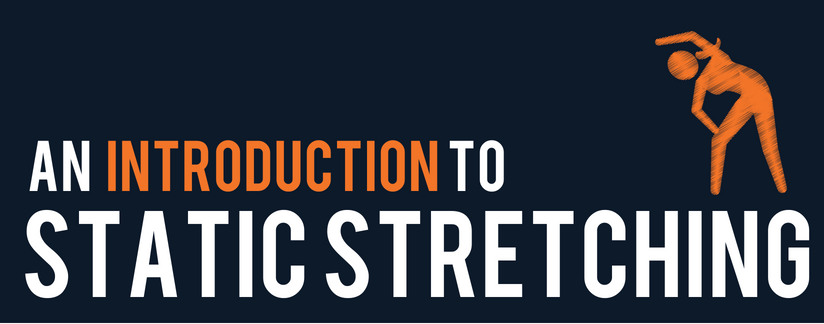
Ok, so I’ve explained that Static stretching can be bad before performing exercise, however, I believe the static stretch can be equally beneficial for different reasons especially when it comes to keeping flexible late into old age. Performing a static stretch involves getting in a position where the stretch is then held on for a prolonged period of time. Most often, holding this stretching phase varies between 15 and 30 seconds. These static stretching exercises are then repeated multiple times to make sure the muscles are loose and relaxed. Often times, this stretching phase is repeated for around 3 to 5 times and comes in the form of active and passive stretching.
Active Stretching
A static stretching routine is usually performed by using your own muscles to hold the different stretching positions. This is called active stretching.

Passive Stretching
Sometimes, a person or an external force like a wall is used to hold the stretching position. This is called passive stretching because it doesn’t involve the own muscles to hold the position.
Do Not Use Static Stretching Before Exercise

Just to reiterate what I’ve been harping on about in the above rant and waffle. While there are a multitude of benefits of static stretching after a workout and on rest or inactive days, one still has to be mindful of the following:
DECREASES YOUR MAXIMUM STRENGTH OUTPUT WHEN PERFORMED RIGHT BEFORE CARDIO AND STRENGTH TRAINING
Power and strength decreases when performing static stretches right before a workout because it relaxes the tendons and muscles that are being stretched. Think back to my elastic band analogy from higher up in this blog. The strength a muscle can generate is largest at the muscle’s resting length. This means that lengthening the muscle with stretching (or shortening the muscle for that matter) decreases the amount of maximum force that the muscle can generate.
INCREASED RISK OF INJURY WHEN PERFORMED RIGHT BEFORE CARDIO AND STRENGTH TRAINING
Power and strength decreases because it relaxes the tendons and muscles that are being stretched. Because of this reduced amount of strength the chance of injuries becomes larger.
CAN TAKE A LONG TIME IF YOU WANT TO PERFORM A FULL-BODY STRETCHING ROUTINE
Performing a lot of full body static stretches can be quite time intensive because you are required to hold the stretch for a considerable amount of time and need multiple sets for the stretching to be effective. This means it can be difficult to perform a decent static stretching routine when you are short on time.
The Great Benefits Of Static Stretching
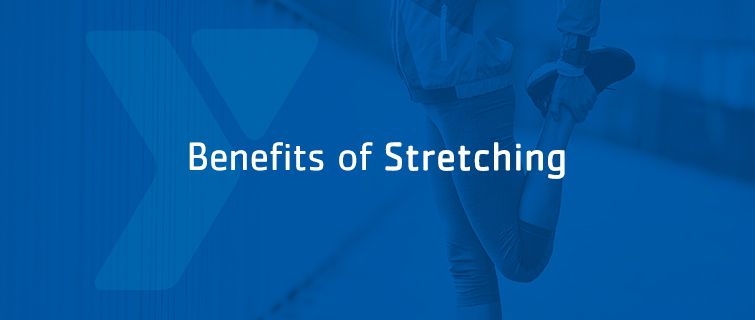
INCREASING MOBILITY AND FLEXIBILITY
Static stretching is effective at increasing the range of motion of our muscles, even more so than dynamic stretching. If static flexibility and suppleness is your goal, then static stretching, preferably after a workout or on rest days, is your best bet.
HELPS RECOVER FASTER AS RELEASES LACTIC ACID FROM MUSCLES
Static stretching after exercise helps releasing lactic acid from our muscles which allows us to recover faster after a workout. This allows us to perform our next workout faster than if you wouldn’t have done any static stretching exercises after exercise. Releasing lactic acid from our muscles also prevents them from cramping up when exercising.
SAFEST FORM OF STRETCHING
Injury risk is reduced with static stretching since it is a slow paced stretching style where you take your time. This leaves more room for error when compared to dynamic stretching.
SUITABLE FOR ALL AGES
Not everyone is flexible and hung like Mick Jagger, Or is currently in the best shape of their life like Keith Richards – yes really – there’s a reason that guy will outlive armageddon and the cockroaches.

However, you don’t have to be in the shape of your life in order to safely perform static stretching exercises. Static stretching is adjustable from individual to individual. Just take on a comfortable position that you can manage, and hold it without straining yourself to hard.

Crucial Static Stretches After Exercise

Below are some crucial muscle areas for runners, and some post-run stretches that help keep them healthy.
Quadricep Stretch

Often referred to as you’re quads, these muscles cover most of the front and sides of your thighs. Stretching your quadriceps is extra important if you’re running up or down hills.
- Stand upright and pull your leg behind you with the corresponding hand.
- Tuck your pelvis and pull your shin toward your thigh.
- Keep your knee pointing downward as you do this stretch to protect your knee joint.
- Hold for at least 30 seconds, then switch sides.
You can also use a chair to balance yourself. This stretch should be felt in the front of your thigh, and from your hip down to your knee.
Hamstring Stretch

Whoa! Don’t get me started on this one. I’ve got hamstrings like John Wayne, but I’ve got no horse or milk to drink? Not even sure what that means. Anyway I digress, your hamstrings make up the back part of your thigh, stretching from the hip to the knee. While this stretch predominantly helps with your hamstrings, it’s also beneficial for your adductors.
- Sit on the ground and extend your left leg.
- Move your right foot toward your inner thigh, so that it touches the top part of your left leg, if possible.
- Lean forward, bending but not rounding your back and waist toward the left foot as if reaching for your toes.
- Hold for at least 30 seconds.
- Repeat with the other leg.
You should feel it in the back of your leg, from your knees to your buttocks.
Calf Stretch

Your calf muscles on the back of your lower legs are a key area to pay attention to after a run. Poor calf stretching can make soreness and injury more likely.
- Stand with your right foot behind your left.
- Bend your left leg forward while keeping your right leg straight.
- Be sure not to bend the right knee and to keep your right foot firmly on the ground, pointing straight ahead.
- Straighten your back and hold the pose for at least 30 seconds.
- Repeat with the other leg.
- For a modification, or if you need help with balance, put your hands up against a wall and push into it.
You should feel this stretch anywhere from the back of your knee down to your ankle.
I.T. Band Stretch

This stretch helps with your body’s iliotibial band, which runs on the outside of your thigh between your hip and shin.
Runners who don’t quite have proper training techniques, and long-distance runners, can easily injure this area.
- Stand near a wall or something you can use to balance yourself.
- Cross your left ankle behind your right ankle.
- While balancing with your right arm, stretch your left arm over your head.
- Reach up and over with your torso and arm, stretching toward your right side.
- Hold for at least 30 seconds and repeat with the other leg.
When your left ankle is crossed behind your right ankle, and you’re leaning toward the right, you’ll feel the stretch in your left leg.
Piriformis And Glute Stretch

This stretch lengthens the piriformis, a deep muscle that runs from your sacrum to your thigh bone. It also stretches the gluteal muscles, which play a vital role in running. Strengthening and stretching your gluteal muscles is important for improving your running performance.
- Lie on your back with knees bent and feet flat on the floor.
- Cross your right ankle over your left knee.
- Grab behind your left knee and bring your leg toward your chest.
- Hold for at least 30 seconds, then switch sides.
You should feel the stretch in the back of your thigh and buttocks.
Adductor Stretch

The adductor muscles are a group of muscles that are located in the inner thighs and run from your pelvis to your thigh, and in some cases, all the way to your knee.
- Stand with your feet spread apart in a wide stance.
- Without moving your left leg, lean to the right and bend your right knee until you feel a stretch.
- Hold for 30 seconds, then switch sides.
You should feel a stretch in your inner thigh.
Spine Stretch

Harder running surfaces, like sidewalks, can place additional stress on the spine and cause tightness and pain.
- Lie on your back with your arms stretched out to the side.
- Bend your right knee in toward your chest.
- Gently let your right knee fall towards the left, keeping your right arm and shoulder blade on the ground. Stop when you feel a stretch.
You should feel a stretch in your spine.
Lower Back Stretch

The lower back area is another part of the body that runners should be aware of. To stretch your lower back:
- Lie on your back.
- Grab both of your knees and pull them up to your chest until you feel a stretch.
- Hold for 30 seconds.
Static vs Dynamic Which One?
If you need to be statically flexible for your sport, like for let’s say ballet or gymnastics, then increasing flexibility and range of motion of the muscles involved are very important. In these specific cases, performing static stretching exercises are more appropriate for your goal, which is increasing flexibility. However, when warming up for both ballet and gymnastics dynamic stretching exercises would be preferable compared to static stretching exercises.
The answer to “static vs dynamic stretching, which one is better” is that it all depends on what your goals are and whether you’re warming up or not.
If you play a sport where maximum and/or explosive strength is important, like sprinting or weightlifting for example, then I would advise performing dynamic stretching exercises instead of static stretching exercises as a warm up right before exercising. The reason is that a static warm up right before exercising will have negative effects on strength and endurance training. A dynamic warm up would in this case be a better way of warming up and preparing your body for the coming physical activity because it requires more physical activity than static stretching would in the first place.
This in turn is more effective for getting your body ready for performing explosive bursts of strength without lowering your maximum strength output like static stretching right before playing sports would do.
The Takeaway

Whilst there are many teachers out there that will still instruct you to perform static stretching before running, I urge you not to participate. You can politely decline without making a scene and continue to look after your body. My advice would be to perform a static stretching routine after your workout or on rest days and performing dynamic stretching exercises right before working out, as dynamic stretching is in general a much more effective way of getting your body ready for physical activity.
This way you get the benefits from both forms of stretching, while negating most of their usual disadvantages.
Both types of stretching have their benefits and disadvantages. However, combining static stretching and dynamic stretching will give you the most bang for your bucks. Make sure to choose wisely which and what form of stretching you perform. Static vs dynamic stretching doesn’t necessarily mean that one form of stretching is superior for everything. The preferred form of stretching is dependent on the sport you are practicing and if it’s part of your warm up or a part of your cool down. Intelligently incorporating both static stretching and dynamic stretching into your workouts will lead to the best results!
How To Static Stretch Properly And Safely
Here are some best practices for getting the most out of your post-run stretch.
- Ease into the stretch and move gradually until you can feel a stretching sensation.
- Consider stretching at the end of your run when your body is warm. There are several techniques you can use, such as static, dynamic, and proprioceptive neuromuscular facilitation stretching
- Hold the stretch at the point where you feel mild tension.
- Avoid stretching if you get pain that is sharp, too intense, or feels tingly.
- Hold the static stretches for 15–30 seconds each. After this period, usually the stretch feels less intense and eases off. If a muscle is particularly tight, you could stay in the stretch for longer, for example 60 seconds.
- Breathe deeply while you’re stretching. This will help the muscle relax and lengthen. Try to move deeper into a stretch when you breathe out.
- Be aware of hyper mobile joints and avoid overstretching them. A hypermobile joint is one that can move beyond a normal range of motion and is therefore less stable and more prone to injury. Keep your joints, especially your knees and elbows, extended or straight, but not overextended.
- Stretch both sides of your body evenly. If you notice one side feels tighter, hold this side for longer to aim for balance.
- Try and use good posture, especially during standing stretches.
One thing is for sure: putting together a dynamic stretching routine takes a lot less time than simply static stretching. Not only that, but it also has the ability to cut down on our run times and even improve our endurance.
